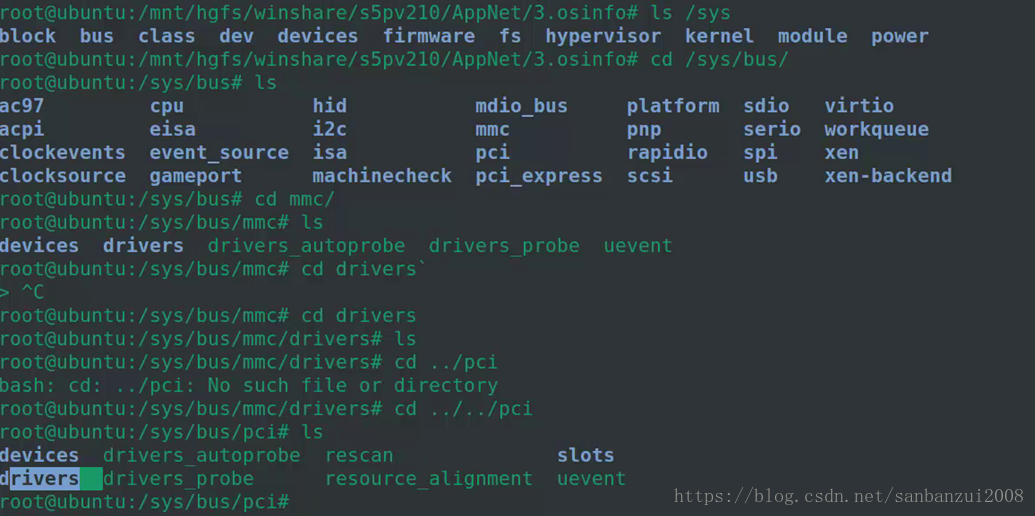proc文件系统的使用,一般有两种方法
一种是手工cat查看,上节课介绍过啦
另一种在程序中查看,以文件IO访问
也可以在shell中再用正则表达式处理
#include<stdio.h>
#include <string.h>
#include <unistd.h>
#include <sys/types.h>
#include <sys/stat.h>
#include <fcntl.h>
int main(int argc, char **argv)
{
int fd;
char buf[512];
if(argc != 2)
{
printf("usage : %s version | cpuinfo | devices \n", argv[0]);
return -1;
}
if(!strcmp(argv[1], "version"))
{
fd = open("/proc/version", O_RDONLY);
if(fd < 0)
{
perror("open");
return -1;
}
memset(buf, 0, sizeof(buf));
read(fd, buf, sizeof(buf));
printf("buf: %s.", buf);
}
else if(!strcmp(argv[1], "devices"))
{
fd = open("/proc/devices", O_RDONLY);
if(fd < 0)
{
perror("open");
return -1;
}
memset(buf, 0, sizeof(buf));
read(fd, buf, sizeof(buf));
printf("buf: %s.", buf);
}
else if(!strcmp(argv[1], "cpuinfo"))
{
fd = open("/proc/cpuinfo", O_RDONLY);
if(fd < 0)
{
perror("open");
return -1;
}
memset(buf, 0, sizeof(buf));
read(fd, buf, sizeof(buf));
printf("buf: %s.", buf);
}
return 0;
}sys文件系统的特点

按理说应该是一个,这是历史原因造成的,现有proc后又sys
有了proc发现很好,后来开发者就都去proc添加文件,结果众多开发者都向proc添加,管理者一开始也没有经验,后来的结果就是proc的内容又多又杂乱,这是一个摸索的过程,后来于是乎就重启炉灶,在sys规划好顶层设计,proc依然保留,这是为了向前兼容,sys优势就是 做了很好的规划。很有规律,对于使用者就是福音,进去一看文件存放确实很规范,编写驱动就操作这里









 本文提供了一个通过C程序读取Linux proc文件系统中version、cpuinfo和devices信息的例子,并对比了proc与sys文件系统的特点。展示了如何利用C语言标准库函数实现文件读取。
本文提供了一个通过C程序读取Linux proc文件系统中version、cpuinfo和devices信息的例子,并对比了proc与sys文件系统的特点。展示了如何利用C语言标准库函数实现文件读取。
















 2946
2946

 被折叠的 条评论
为什么被折叠?
被折叠的 条评论
为什么被折叠?








